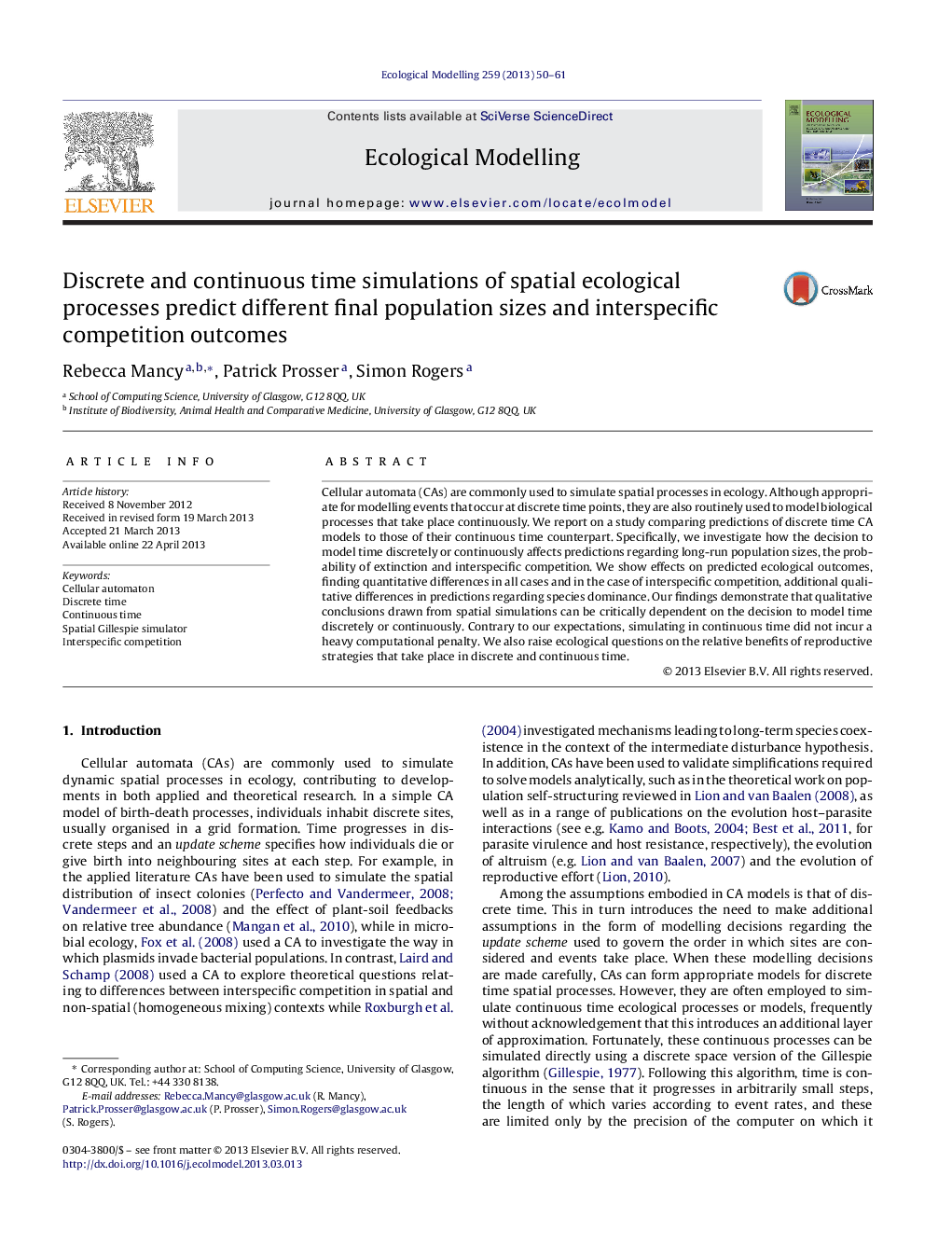| Article ID | Journal | Published Year | Pages | File Type |
|---|---|---|---|---|
| 6297224 | Ecological Modelling | 2013 | 12 Pages |
Abstract
Cellular automata (CAs) are commonly used to simulate spatial processes in ecology. Although appropriate for modelling events that occur at discrete time points, they are also routinely used to model biological processes that take place continuously. We report on a study comparing predictions of discrete time CA models to those of their continuous time counterpart. Specifically, we investigate how the decision to model time discretely or continuously affects predictions regarding long-run population sizes, the probability of extinction and interspecific competition. We show effects on predicted ecological outcomes, finding quantitative differences in all cases and in the case of interspecific competition, additional qualitative differences in predictions regarding species dominance. Our findings demonstrate that qualitative conclusions drawn from spatial simulations can be critically dependent on the decision to model time discretely or continuously. Contrary to our expectations, simulating in continuous time did not incur a heavy computational penalty. We also raise ecological questions on the relative benefits of reproductive strategies that take place in discrete and continuous time.
Related Topics
Life Sciences
Agricultural and Biological Sciences
Ecology, Evolution, Behavior and Systematics
Authors
Rebecca Mancy, Patrick Prosser, Simon Rogers,
